TECH TUESDAY: How Racing Point’s radical upgrades provide a mid-season redesign

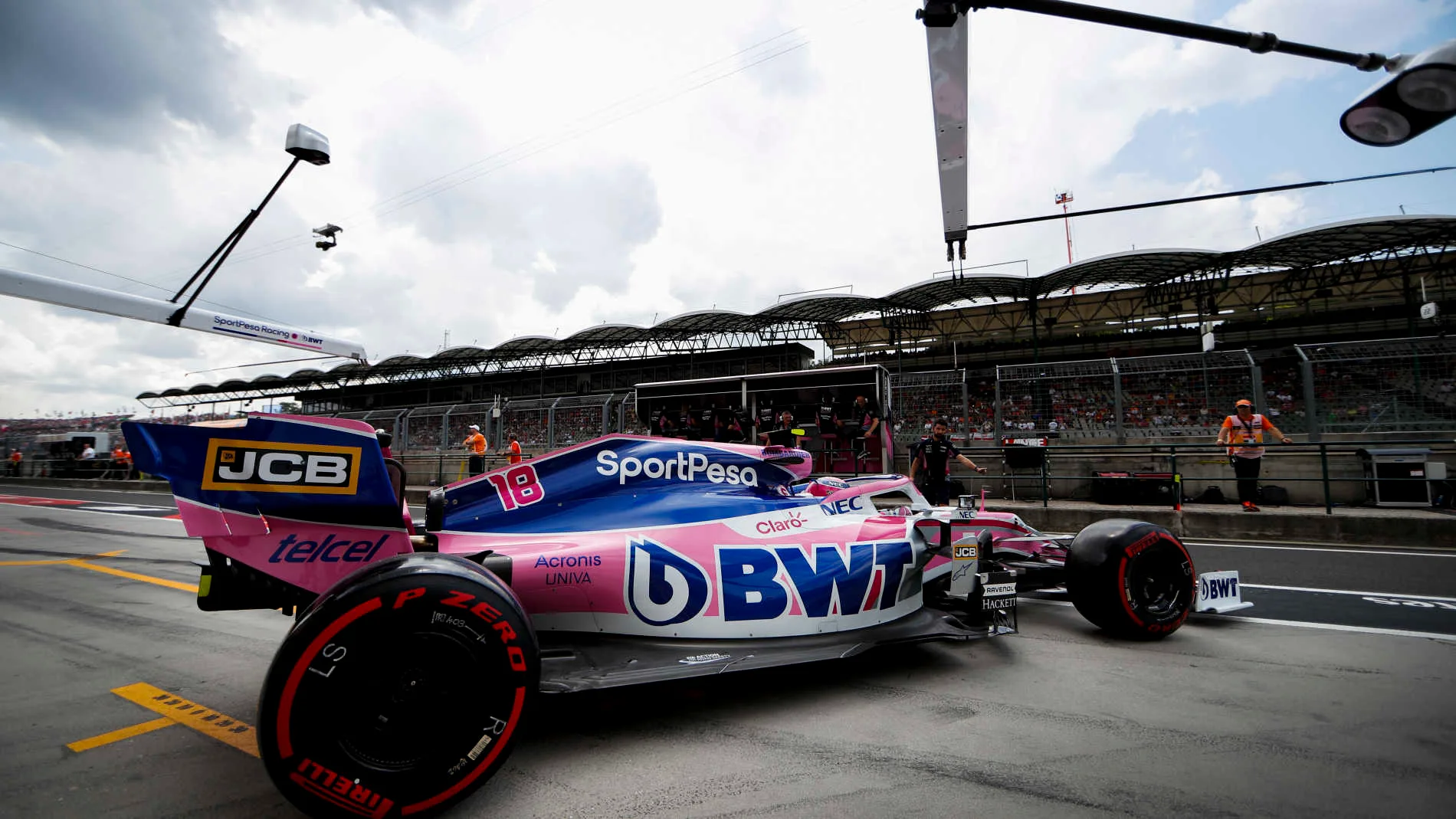
One year after the arrival of new owners, the team now called Racing Point turned up at Hungary with the second of a massive three-part car upgrade. Although it did not provide the team with the performance that was hoped for, the car is still in a state of transition between the new model and the old. The team’s financial difficulties under the previous ownership have meant that both the 2018 and ’19 cars were simply refinements of that of 2017, the first year of the new wider body regulations.
The car taking shape at Hockenheim and Hungary (with the third major part of the development set to come in the season’s second half) represents the Andy Green-led technical team’s first real opportunity to develop the car to incorporate some of the cutting-edge ideas developed by other teams during the last couple of seasons.
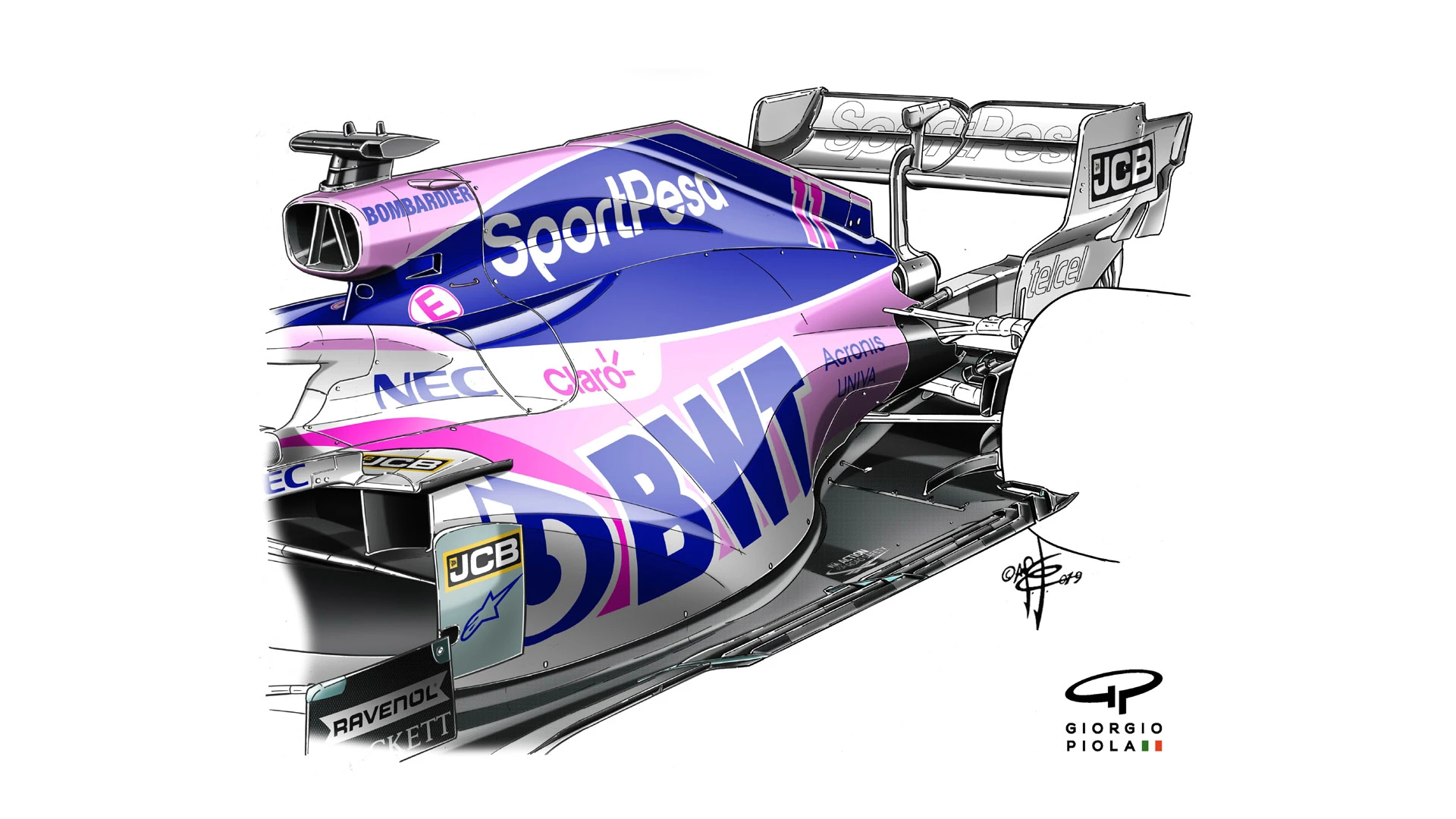
The most visible of these came at Hockenheim with a totally reconfigured sidepod shape, courtesy of a complete repackaging of the cooling system. The aim of this was to bring both aerodynamic and dynamic mechanical advantages. The new pods, foregoing the previous undercut at the front, are now ramped downwards in profile and the undercut section is within the ‘coke bottle’ part of the pod where it tapers inwards at the rear. This is just a different way of accelerating the airflow along the body sides, possibly with greater efficiencies than the more traditional front undercut design. It was a configuration first used at Red Bull.
Without the undercut at the front, it has been possible to lay the radiators at a slightly different angle. They can now stick out more at the bottom (which in itself lowers the centre of gravity height) so as to take up less space at the top, which has allowed the cooling inlet to be reduced in size slightly. The re-alignment and reshaping of the radiators has created the space for the whole cooling package aft of that to be brought forward and/or down. This centralizes the car’s masses and lowers the centre of gravity, both of which should improve the car’s mechanical traits. Centralising the masses will give the car a more instantaneous response in changing direction. Lowering the centre of gravity gives less multiplication of loads upon the tyres under cornering.
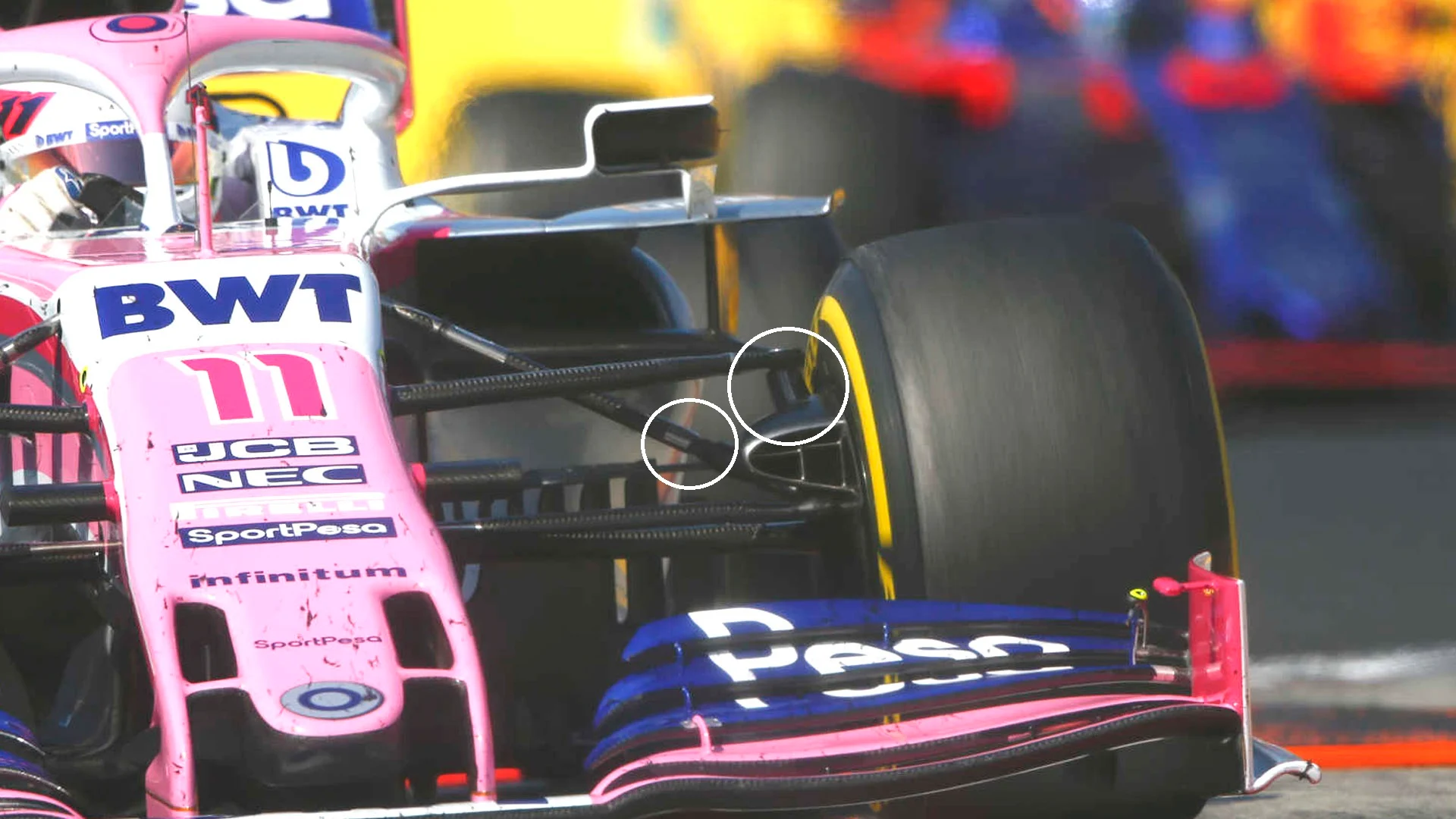
The second part of the upgrade was the new front suspension introduced in Hungary. This features two technologies new to the team: 1) the mounting of the top wishbone on a hub extension to the wheel rather than the hub itself - right circle in drawing above - and 2) the incorporation of an articulated joint in the pushrod (the principle of which was explained here)- left circle in drawing above - allowing the nose of the car to be leveraged downwards past a certain amount of steering lock (as used on slow corners).
The hub extension idea was introduced a couple of years ago by Mercedes and Toro Rosso and allows the top wishbone to be placed in a less aerodynamically disruptive place, which in turn allows the cooling inlets to be sited lower as the airflow is not having to be directed at such an upwards angle to travel over the top of the wishbone, but can be directed beneath it instead.
Part three of the upgrade is expected to be a new nose and front wing, which will give a better airflow link up between the new front suspension and sidepods. This three-part upgrade is essentially a mid-season redesign representing a massive investment of time and resource, underlining the point that the team are now in a much healthier place financially. The fruits of that will hopefully be seen in their performance during the season’s second half.
Next Up
Related Articles
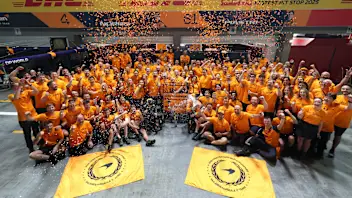 PalmerJolyon Palmer picks his top performers in 2025
PalmerJolyon Palmer picks his top performers in 2025 F1 CEO Domenicali reflects on 'phenomenal' 2025
F1 CEO Domenicali reflects on 'phenomenal' 2025 ExclusiveWhy Gasly feels ‘ready for my time’ in F1
ExclusiveWhy Gasly feels ‘ready for my time’ in F1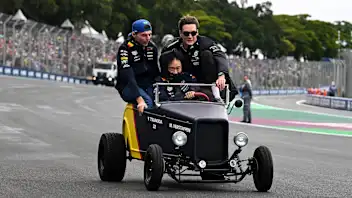 Best radio and more – F1's 2025 alternative awards
Best radio and more – F1's 2025 alternative awards 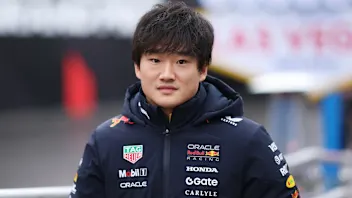 Mekies on ‘very difficult’ decision to demote Tsunoda
Mekies on ‘very difficult’ decision to demote Tsunoda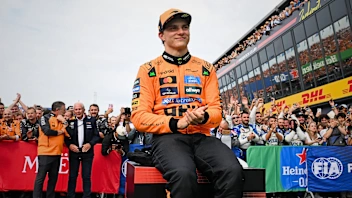 Hinchcliffe'History shows Piastri will be even better in 2026'
Hinchcliffe'History shows Piastri will be even better in 2026'